Text Messaging Facts
Text messaging facts show how important and common this form of communication is today. Knowing these facts helps us see how text messaging affects our daily lives, how we interact with others, and how businesses connect with customers, especially through SMS campaigns. By understanding text messaging better, we can use it more effectively, avoid common mistakes, and make the most out of this powerful tool. Whether you are trying to improve your texting skills or use it for work, such as in marketing through SMS campaigns, these facts are useful and important.
What is texting?
Texting is the process of sending and receiving short written messages through mobile phones or other digital devices. These messages, called SMS (Short Message Service) texts, are a fast and easy way to communicate. Texting lets people stay connected and share information quickly, whether chatting with friends, coordinating work, or reaching customers. It is a handy tool in our everyday lives because it is quick, convenient, and always accessible.
SMS marketing statistics in 2023
(ClickSendBlog, 2024)
98% of text messages are read in minutes:
Almost every text message is read within a few minutes after it is received. This shows how quickly people see and react to texts, making them a great way to get your message noticed right away.
75% of consumers like receiving messages from brands:
Most people enjoy getting texts from brands, but only if they have agreed to receive them first. This means that when consumers choose to get messages, they are more likely to appreciate and engage with them.
20% of customers said they made a purchase after receiving a text from a small business:
One in five customers buys something after getting a text from a small business. This shows that SMS can be very effective in driving sales and encouraging purchases.
87% of businesses rate SMS marketing as important to their future marketing strategy:
Nearly nine out of ten businesses believe SMS marketing will be crucial for their plans moving forward. This highlights how valuable SMS is for reaching customers and growing their business.
38% of businesses use text marketing for sales and promotions
About 38% of businesses use text messages to promote their products and offer special deals. This means that many companies rely on SMS to boost sales and keep customers informed about promotions.
Consumers redeem SMS-delivered coupons 10 times more than other types of coupons:
People use coupons sent via text ten times more often than other kinds of coupons. This shows that text messages are a powerful way to deliver discounts that customers actually use.
91% of consumers are subscribed to at least one SMS marketing program:
Almost all consumers are signed up for at least one SMS marketing program. This indicates that people are open to receiving promotional texts and updates from businesses they are interested in.
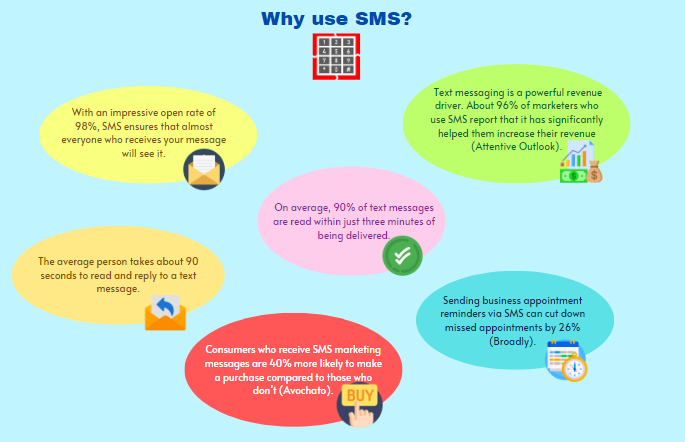
Why SMS beats E-mail
(ClickSendBlog, 2024)
Texts are opened 5x more than email:
Text messages are read almost instantly, with 98% being opened within 2 minutes. In contrast, only 20% of emails are opened so quickly. This shows that texts grab people’s attention much faster than emails.
53% of people check their text messages 11 times a day:
Most people look at their text messages about 11 times a day. On the other hand, only 29% of people check their emails that often. This frequent checking means texts are seen more regularly.
SMS response rates trump email by 750%:
People respond to text messages much more than to emails. While the average email response rate is just 6%, texting has a much higher response rate of 45%. This makes texting a more effective way to get replies.
86% of small business owners say text messaging offers higher engagement than email:
Most small business owners find that text messaging leads to better engagement with their customers compared to email. This means customers interact more with text messages.
More people unsubscribe from email lists compared to SMS:
Fewer people opt out of receiving texts. Less than 5% of people unsubscribe from SMS marketing, whereas about 20% unsubscribe from email lists. This suggests that people prefer to keep getting texts from businesses.
41% of consumers would rather receive brand update texts than emails:
Nearly half of consumers prefer getting updates from brands via text rather than email. This preference shows that texts are a more convenient and direct way to communicate.
SMS clickthrough rates are at least 17% higher than email:
Text messages also lead to more clicks. SMS marketing typically has clickthrough rates of 20-35%, while email clickthrough rates are under 3%. This means texts are more likely to drive people to take action.
97% of text messages don’t get stuck in the spam folder:
Almost all text messages are delivered straight to the recipient, with only about 3% being marked as spam. In comparison, nearly 85% of emails end up in spam folders. This high deliverability makes texting a reliable communication method.
On average, it takes people 90 seconds to respond to a text message:
People usually reply to text messages within 90 seconds. However, it can take up to 90 minutes to get a response to an email. This quick response time highlights how fast and effective text messaging can be.
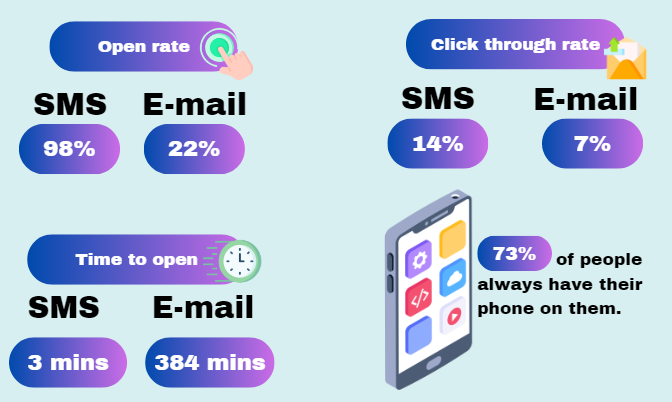
Text messaging usage and preferences
(Intradyn, 2024)
Text messaging (92%) is very popular in the U.S., just behind phone calls (95%):
Texting is widely used, with 92% of people using it, slightly less than phone calls. It is quick, convenient, and keeps a written record, which younger people especially appreciate for its flexibility.
81% of people prefer getting text messages from businesses:
Most consumers like receiving texts from businesses, with 81% signing up for them. This shows that people expect fast and easy communication through texts.
42% of consumers expect a business to reply within 15 minutes:
People want businesses to respond to texts within 15 minutes. While auto-replies can handle initial responses, businesses should follow up with personalized messages to meet customer expectations.
Texting for notifications and promotions
(ClickSendBlog, 2024)
75% of consumers appreciate shipping updates via text:
People prefer receiving updates about their shipments through text messages. E-commerce businesses should use texts for delivery notifications.
75% of consumers like to get promotional offers via SMS:
Most consumers enjoy getting promotional offers through texts. Businesses should send sales and offers via text, with links for easy shopping.
41% respond to promotional SMS offers:
Many people respond to promotional texts, making them a valuable tool for gaining customer insights and driving sales.
Over 50% of people are more likely to buy if they receive a text message with images:
Including images in text messages can boost purchase likelihood, so consider using MMS for richer content.
34% of customers texted a business without being texted first:
Customers are actively reaching out to businesses via text, so make sure your business number is visible and accessible.
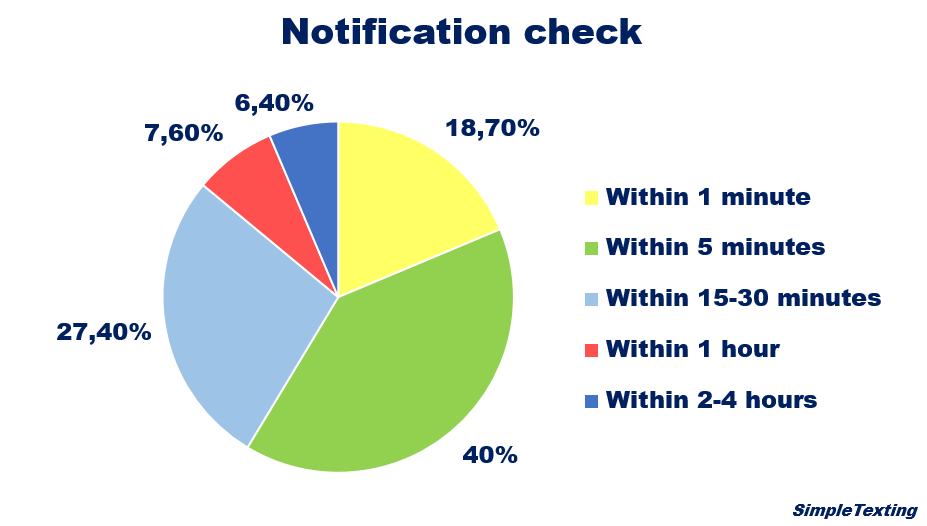
Businesses and industries use text messaging
(ClickSendBlog, 2024)
55% of businesses contact customers via text message:
Many businesses are already using text messaging to reach customers. Do not miss out—adopt texting to stay competitive.
83% of consumers received an SMS from a business in 2020:
Customers are comfortable with receiving text messages from businesses and often expect them, especially for updates and notifications.
SMS can cut customer support costs for businesses:
Using SMS for customer support can reduce costs by up to 60% per interaction.
60% of business owners planned to increase SMS budgets this year:
Many business owners see the value in SMS and are investing more in it for better results.
Real estate is the leading industry for using SMS:
73% of real estate businesses use SMS, showing its popularity and effectiveness in various sectors.
70% of businesses want to use SMS marketing:
A large percentage of businesses are interested in SMS marketing due to its high engagement rates.
42% of retail stores expect to increase their SMS marketing budgets:
Retailers are planning to spend more on SMS marketing to meet customer preferences and see strong returns on investment.
97% of companies with texting initiatives say it helps them communicate more efficiently:
Businesses that use texting find it improves their communication with customers.
50% of the top 1000 online retailers use text messaging for marketing:
Many leading retailers use text messaging to enhance their marketing strategies and stay competitive.
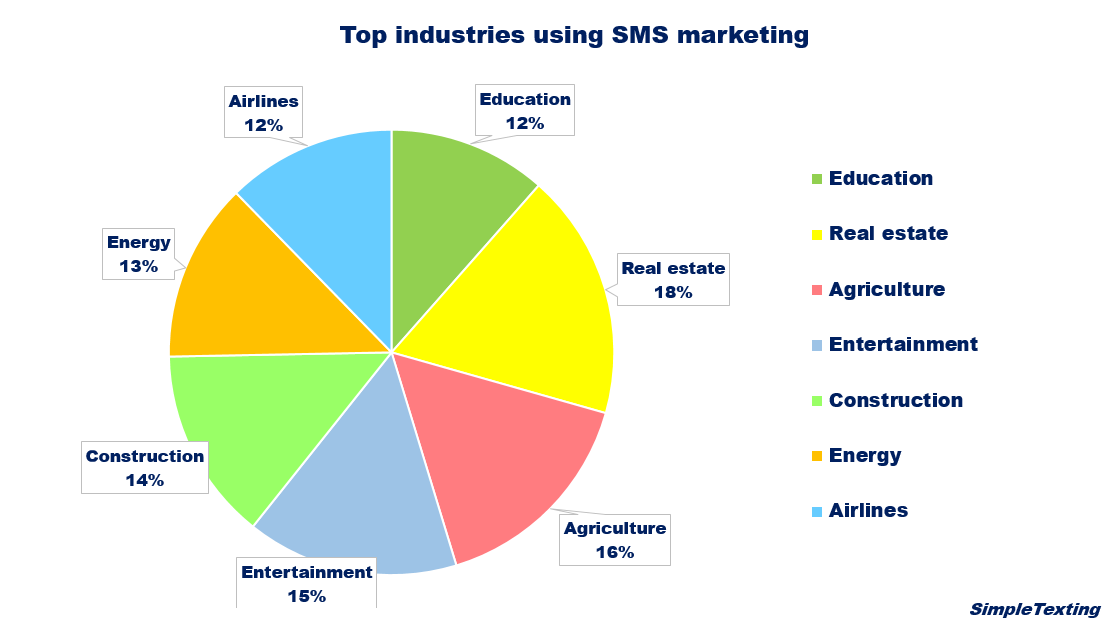
The future of SMS marketing
The future of SMS marketing is rapidly evolving as technology advances. By 2025, an estimated 5.9 billion people will be using SMS, highlighting its growing importance. With 77% of the global population expected to own smartphones, mobile communication will become even more integral. The rise of AI and chatbots is set to further revolutionize SMS marketing by personalizing interactions and improving engagement. As these trends continue, SMS will remain a powerful tool for effective business communication.
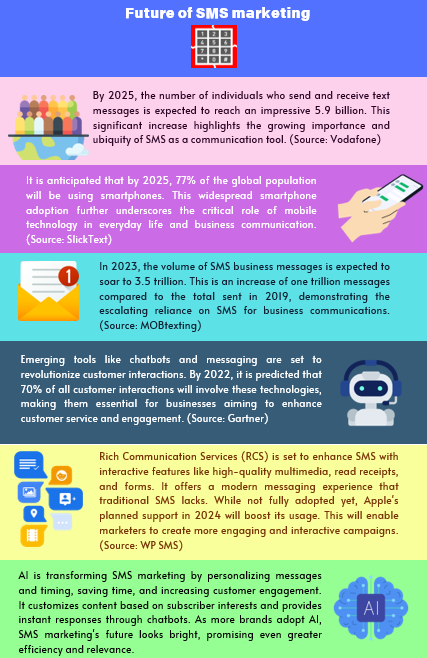
Summary
Text messaging is a crucial and widespread communication tool in today’s world. Understanding its significance helps us appreciate its impact on our daily interactions and business connections, particularly in SMS marketing. By grasping these facts, we can use text messaging more effectively, avoid common pitfalls, and leverage its full potential. Whether for personal use or professional purposes like SMS campaigns, this knowledge is essential for making the most out of text messaging.
